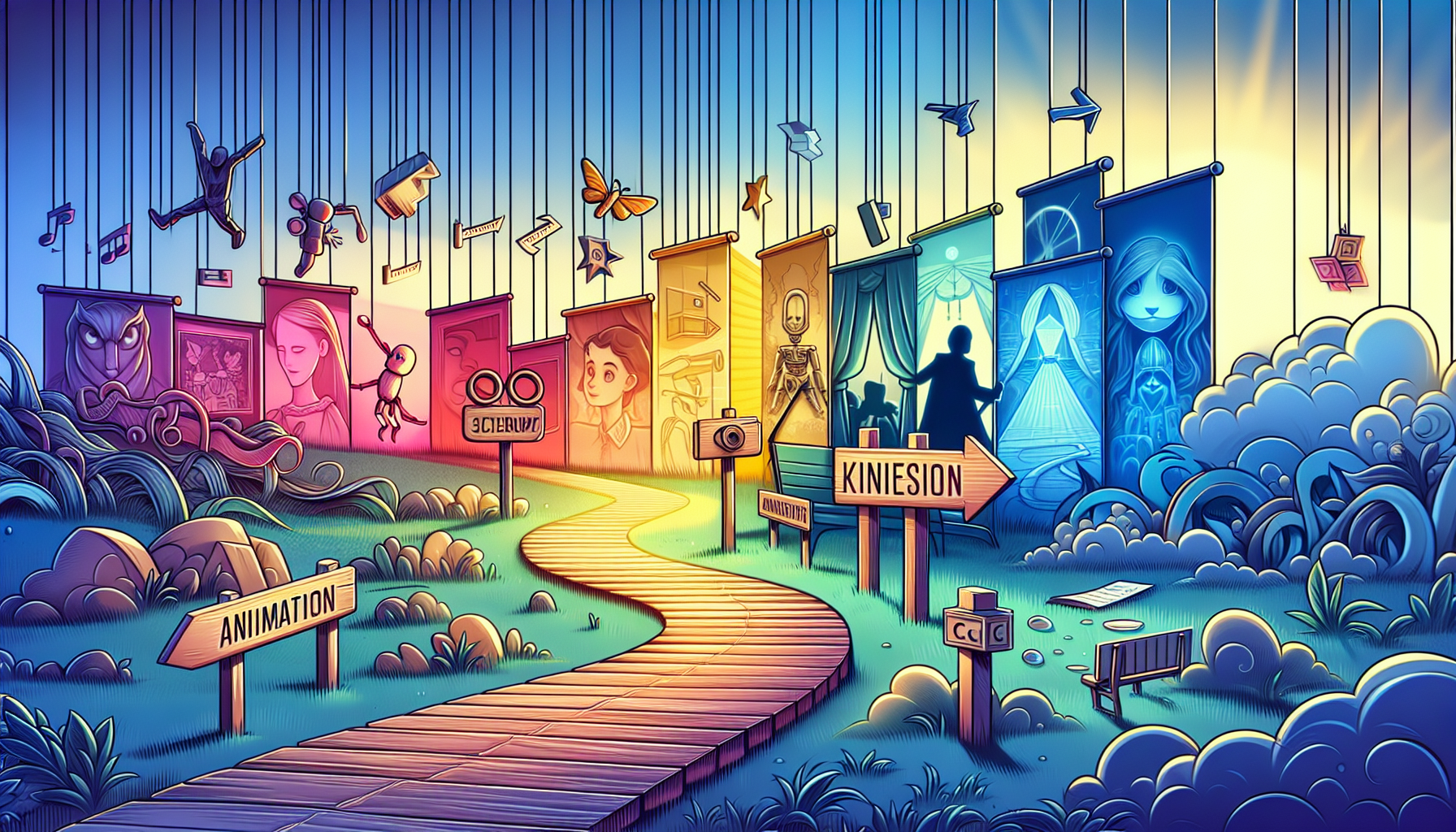Discovering Animation Cinema: A Journey Through Its Subgenres
Embarking on a journey through animation cinema is like diving into a kaleidoscope of creativity, where each turn reveals a dazzling array of styles, stories, and techniques. Unlike live-action films, animated cinema is not constrained by the physical laws of our world, offering filmmakers the freedom to bring any vision to life. The world of animated cinema is vast, encompassing a wide range of subgenres, each with its own unique characteristics and appeal.
Traditional Animation
Starting with traditional animation, also known as cel animation, this subgenre is the oldest form where each frame is drawn by hand. Classics such as Disney’s Snow White and the Seven Dwarfs and The Lion King exemplify this painstaking but artistically rewarding technique. Traditional animation conjures a nostalgic charm, resonating with audiences through its timeless beauty and intricate craftsmanship.
Computer Animation
The advent of computer animation marked a seismic shift in the animation landscape. This subgenre utilizes 3D modeling to create characters and environments, offering a new realm of realism and fluidity in movement. Pixar’s Toy Story, the first feature-length computer-animated film, revolutionized the industry and set a new standard for storytelling and technical excellence. Today, computer animation dominates the box office, enchanting viewers with increasingly sophisticated visuals and narratives.
Stop Motion Animation
Stop motion animation breathes life into inanimate objects, using physical materials like clay, puppets, or even common household items to create movement frame by frame. This subgenre captivates with its tactile quality and the sheer creativity of bringing the still to life. Films like Coraline and The Nightmare Before Christmas showcase the eerie yet whimsical potential of stop motion, drawing audiences into their meticulously crafted worlds.
2D Vector-Based Animation
2D vector-based animation represents a blend of traditional and digital techniques, where artists use computer software to create and manipulate vector graphics. This approach offers fluidity and scalability, allowing for crisp, clean lines that are particularly suited to vibrant, dynamic works. Shows like Samurai Jack and web-based animations illustrate the versatility and smooth action achievable with vector animation.
Anime
Originating from Japan, anime has become a global phenomenon, capturing hearts with its distinctive style and depth. Anime encompasses a vast range of genres, from action-packed adventures and sci-fi epics to romantic dramas and introspective slice-of-life stories. Series like Naruto and films such as Spirited Away demonstrate the emotional complexity and visual beauty anime is capable of, drawing from a diverse set of cultural and thematic influences.
Experimental Animation
At the fringes of animation cinema lies experimental animation, a subgenre that defies traditional narrative structures and aesthetic norms. Experimental animators use a variety of mediums, including sand, glass, and even digital code, to explore abstract concepts and push the boundaries of visual storytelling. This subgenre challenges viewers to think outside the box and interpret films in a more personal, subjective manner.
The world of animation cinema is a testament to human creativity, offering a diverse tapestry of stories and styles that cater to all tastes and ages. From the hand-drawn masterpieces of traditional animation to the cutting-edge wonders of computer animation, each subgenre adds its own flavor to the rich, ever-evolving landscape of animated films. As technology advances and artists continue to innovate, the journey through animation cinema promises to captivate, inspire, and surprise audiences for generations to come.







